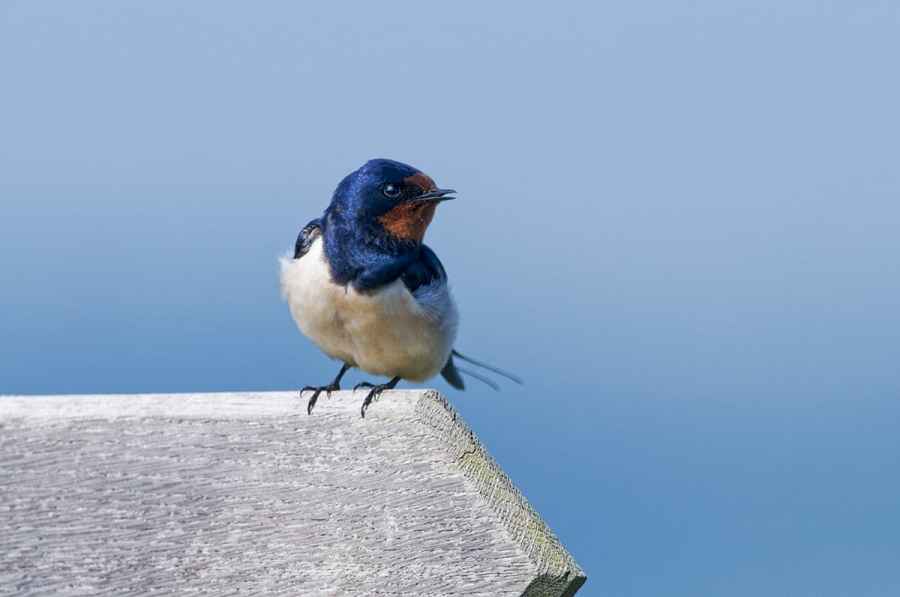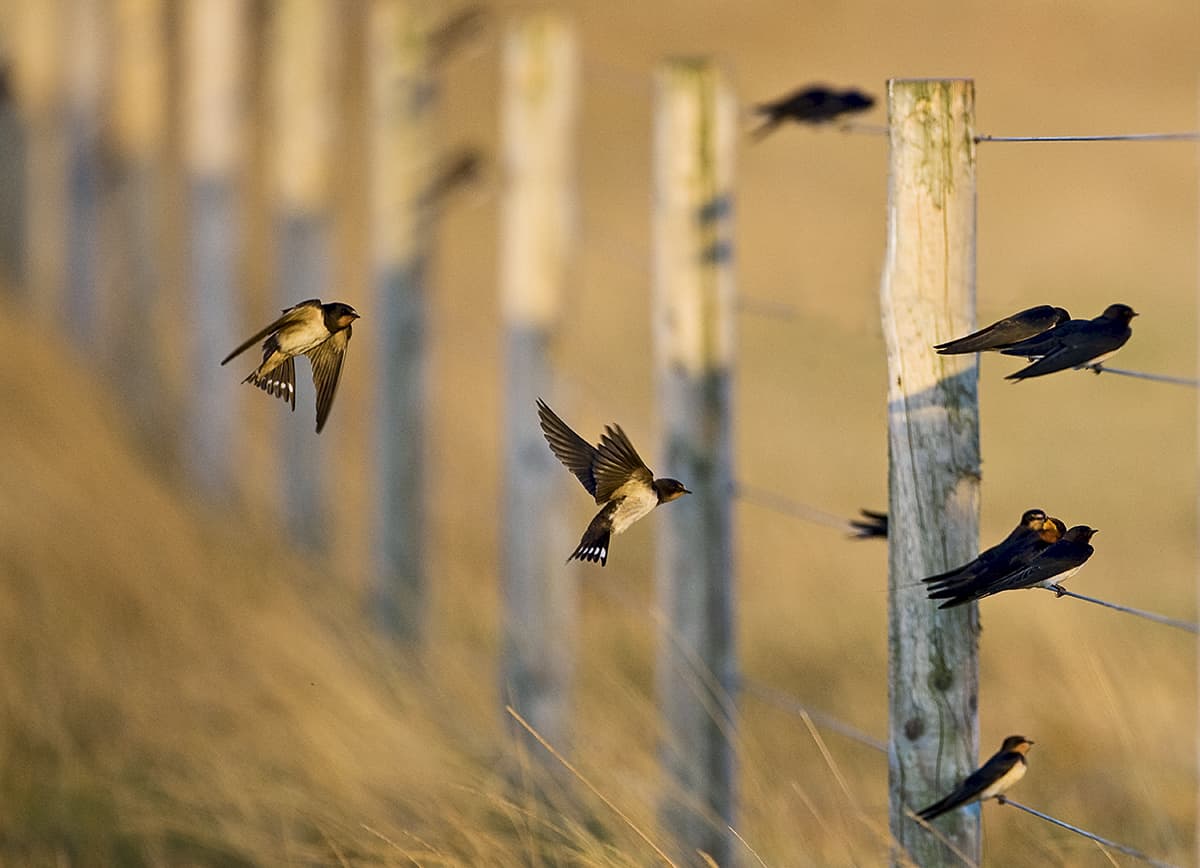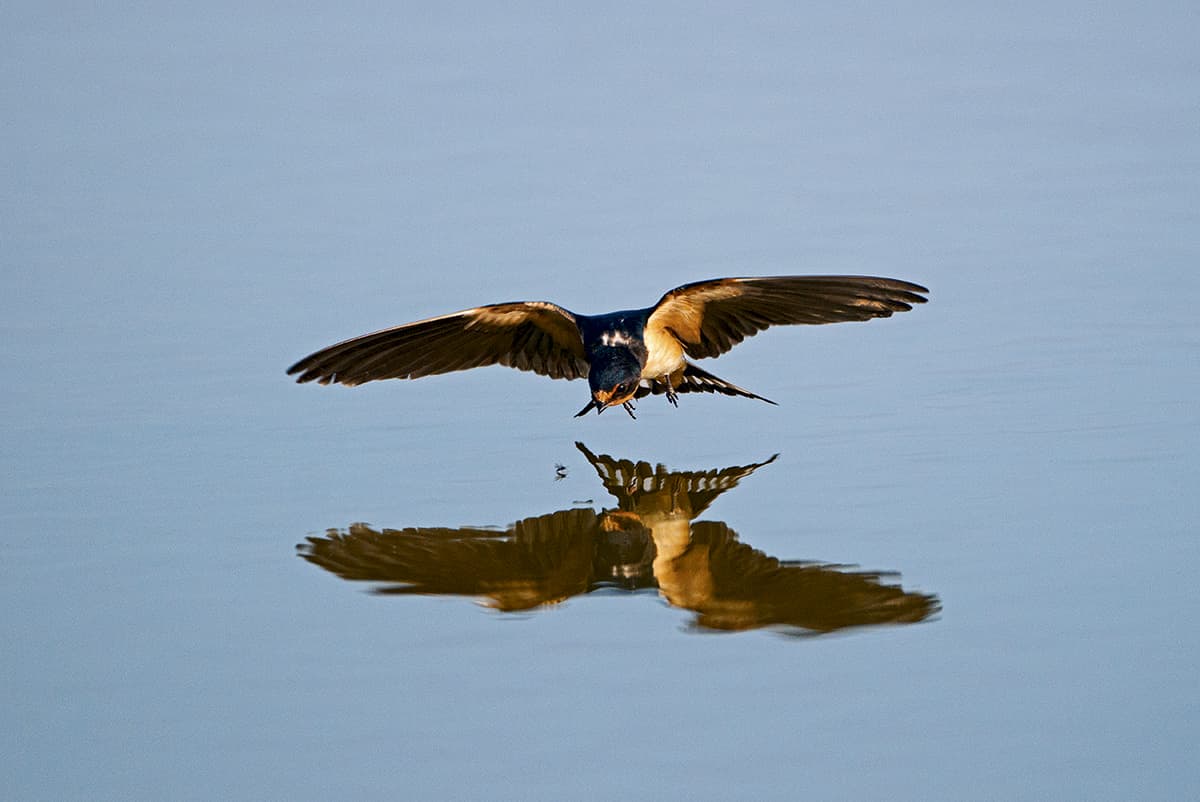If I were a bird, I’d like to be a swallow. It seems very appealing to spend the winter under the warm South African sun before lazily making my way back north, arriving at my favoured breeding site in spring just as it begins to warm up.
However, the reality is much more harsh, with swallows having to undergo an arduous annual journey across seas and deserts that involves them covering many thousands of miles on the wing.
About the swallow
Swallows are small birds with dark, glossy-blue backs, red throats, pale underparts and long tail streamers.
Location
The swallow is a traditional harbinger of spring and is our most widespread summer migrant. Found throughout Britain, they are most common in regions where cattle are grazed.
Size
17-21cm including tail.
Nesting
The nest is a mud cup built inside outbuildings.
Diet
Flying insects. Swallows often feed by flying low around livestock, picking off flies.
Population
Increasing slowly since the late 1990s, and estimated to be around 860,000.

Habitat
You’ll find swallows in areas where there is a ready and accessible supply of their main diet, which is small insects. A good place to find these birds is in open pasture with access to water, as it offers a good food source, while quiet farm buildings nearby offer the perfect place to nest.
Towards the end of the summer months through to the start of early autumn, large reed beds can be excellent places to look for pre-migration roosts as they prepare for the flight back to Africa.
Best time to shoot
Swallows can be photographed at any time from spring to autumn. I find that the best opportunities on offer for photographing swallows are between May and June when birds are breeding, and then when they start to gather to migrate from late August through September.
Shooting advice
In flight
Swallows tend to fly low to the ground with an easy free-flowing flight. Their size and speed does make them quite a challenge for flight shots against an open sky, but when flying against the landscape they’ll really test your panning skills and your camera’s autofocus capability, so be prepared to practise.

Pre-focus
On cool days when flies are in short supply, you’ll find that swallows will often congregate over reed beds or bodies of water where there may be food. To have any hope of a sharp flight shot, I try to pre-focus and then track the out-of-focus bird as best I can in my viewfinder, before firing off a burst of shots when the swallow begins to come into focus. I have successfully photographed swallows plucking flies off the surface of a pool close to home using this method.
Nestlings
During the breeding season flight shots are on offer as birds feed their young in the nest. Nestlings make great subjects as they lean over the rim of the nest begging for food.
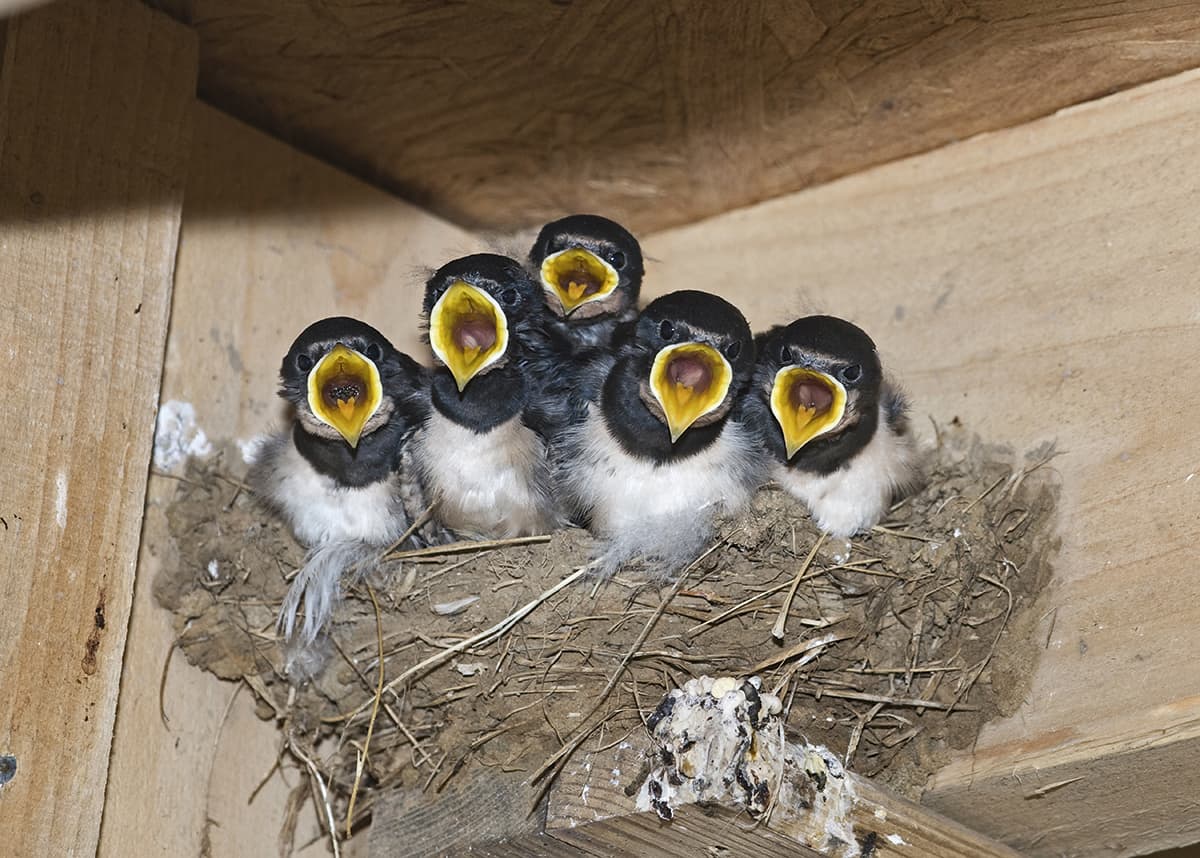
Once on the wing, the young will stay close to the nest to continue to be fed. Further opportunities for photographing swallows are to be had when fledglings are perched on a fence or on low vegetation, as adults hover in front of hungry mouths delivering food. But don’t get too close, as you could put the adults off feeding their young.
Mobile hide
By September swallows will start gathering in readiness to fly south for the winter. While flocks often like to perch along telegraph wires, they can also be found lined up along fences or on low vegetation. To avoid disturbing them, a parked car makes the perfect mobile hide and will allow you to shoot quietly.
Kit list
Flashgun
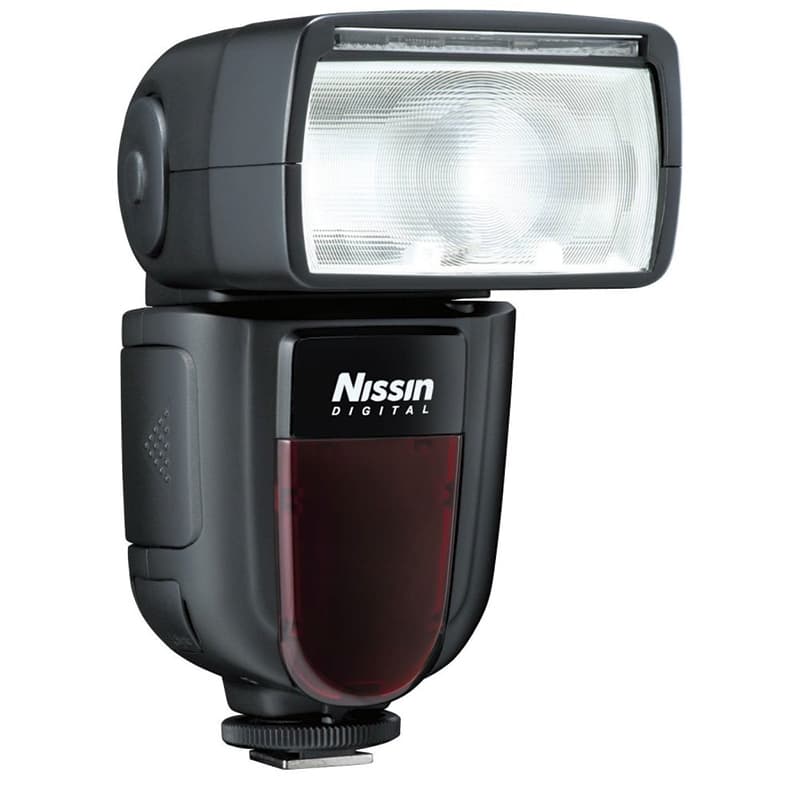
Swallow nests are rarely sited in well-lit corners of buildings, so a flashgun will almost certainly be required.
Telephoto lens

A lens of at least 400mm is recommended. Shorter lenses with the use of a remote trigger may be useful for photographing nesting swallows.

